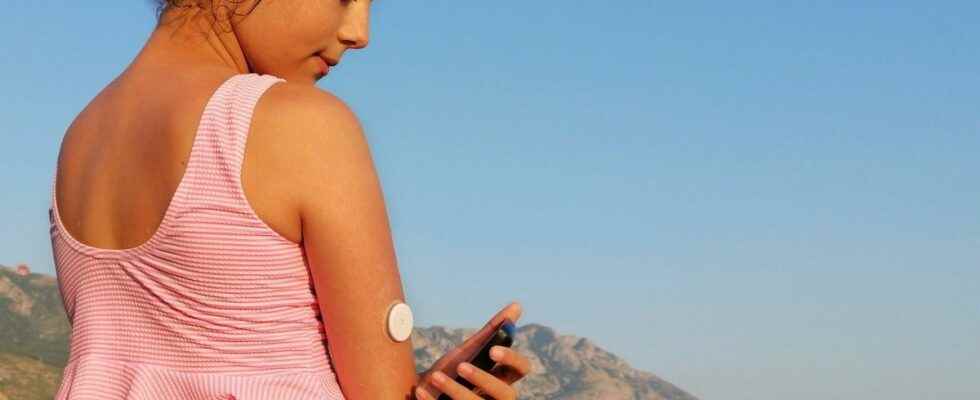Published on
Updated
Reading 2 mins.
In recent weeks, the “glucose sensor” – a medical device for people with diabetes – has become the new favorite “gadget” of influencers. A trend that annoys patients and health professionals to the highest degree.
While wellness advice continues to flourish on social networks, a particularly wacky new trend has recently made diabetics jump: for several weeks, influencers have been promoting glucose sensors to “lose weight” and “control their sugar intake. A heresy according to many specialists.
A glucose sensor presented as a “toy”
On the videos, you can see many influencers “bragging” about the advantages of the glucose sensor.
One of them even broadcast, as BFMTV reports, several screenshots of the evolution of his blood sugar over the day. A method that would allow him to limit the “post-meal kicks”them “mood swings” and the “lack of concentration”. A gadget that would prove to be very practical “to lose weight”.
Nonsense for diabetics who have expressed their dissatisfaction on social networks.
“The variations in blood sugar are present in people whose pancreas works but to a low extent and do not require continuous monitoring”recalls @coco_and_poodie, suffering from type 1 diabetes.
Another, @melanie.frechon, warns Internet users. “Data is useless when you don’t know how to analyze it (…) and it can become dangerous if a bad analysis is done”.
The Instagrammer also specifies that the promotion of the glucose sensor is harmful because “it causes risks of shortage among people who really need it” ; as is the case for people with type 1 diabetes, for whom the device is vital.
Finally, the misuse of this medical device leads to a minimization of the disease, while this long-term condition impacts the lives of millions of people daily.
Consult a GP online
The role of the glucose sensor
According to the French Diabetes Federation, this small portable device, about the size of a two euro coin, sticks to the back of the arm or abdomen and measures the concentration of glucose in the interstitial liquid (the liquid that lies between the skin and the blood) approximately every 10 seconds, throughout the day and night.
A device which has the advantage of avoiding having to prick the finger several times a day and which allows people with diabetes to better manage the disease and their blood sugar.
